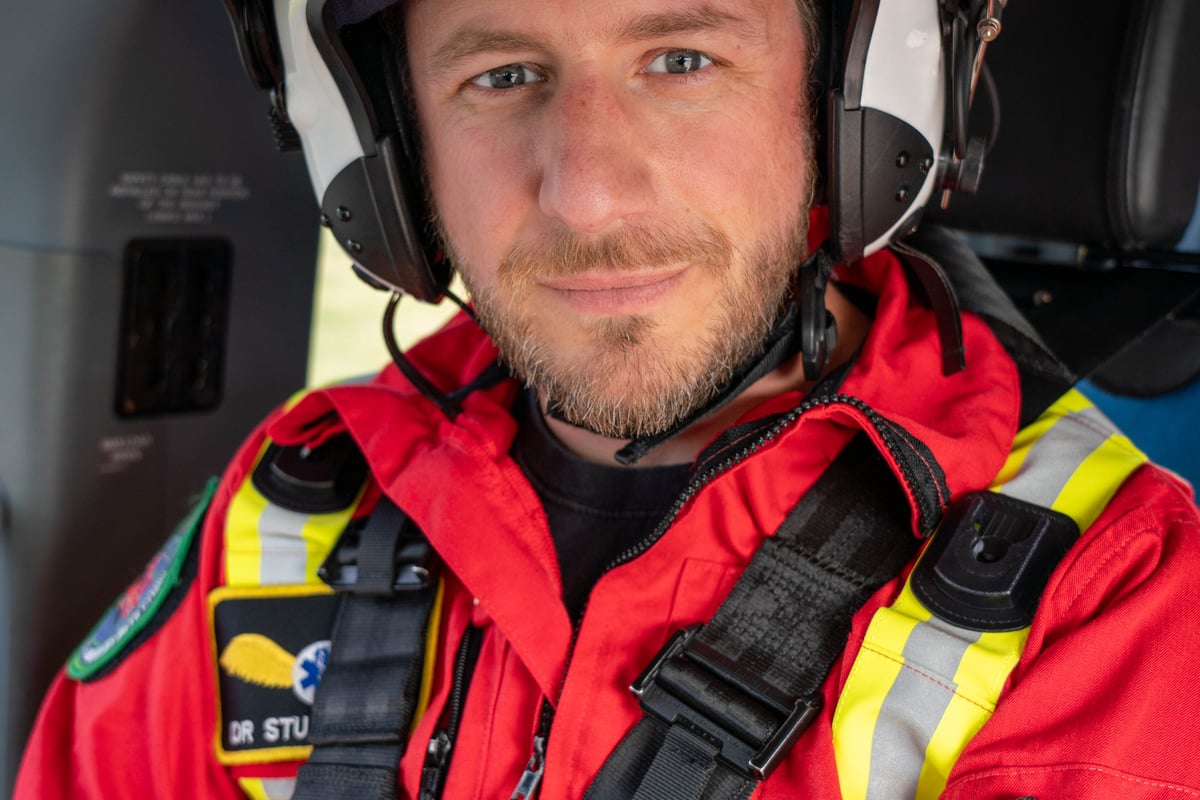Politics
Air Ambulance Service Boosts Coverage in Wales with New Plans

The Wales Air Ambulance service is set to enhance its coverage across Mid and North Wales, following a comprehensive review aimed at addressing significant gaps in emergency response. Recent findings revealed that between 2023 and 2024, 551 emergency calls in these regions, particularly after 20:00, did not receive an air ambulance response, raising concerns about the service’s availability in critical situations.
Those involved in the review highlighted the need for improved positioning of air ambulance crews. Currently, only one medical team operates during nighttime hours, based in Cardiff, which limits the service’s ability to respond efficiently across the region. The report indicated that during the same period, 632 emergencies suitable for an air ambulance occurred, yet only 81 received assistance. In contrast, South Wales saw 983 emergencies attended by the service.
As part of the proposed changes, a new base will be established in a central location near the A55, allowing for more effective coverage. The location was chosen after analyzing approximately 2,000 individual sites to determine the best area for rapid air and road response. Two teams will be deployed at the new base, with one operational from 08:00 to 20:00 and the other from 14:00 to 02:00, addressing the increased demand for services during afternoons and evenings.
Concerns regarding potential reductions in helicopter availability have been addressed by the Wales Air Ambulance, which confirmed that it will continue to operate four helicopters. The service reassured communities that these changes are designed to enhance, not diminish, the level of care provided.
The need for air ambulance services is particularly acute in rural areas, where access by road is limited. For instance, in 2024, the service attended only one emergency by road in the LL53 postcode, which covers part of the Llyn Peninsula. The new strategy aims to optimize resource allocation, ensuring helicopters are primarily utilized in rural regions while rapid response vehicles cover urban areas.
The service also clarified misconceptions regarding its role. As a secondary responder, the air ambulance provides specialist care after initial treatment from Community First Responders and the Welsh Ambulance Service. Less than 1% of all emergency calls require air ambulance intervention, emphasizing the importance of its specialized capabilities.
In response to inquiries about the potential introduction of a road-based service suggested by the previous Chief Ambulance Services Commissioner, the Wales Air Ambulance clarified that this proposal is unrelated to the air ambulance service. Instead, it aims to address broader concerns within the ambulance system and would be managed solely by NHS Wales.
The missed emergencies highlighted in the review represent more than just statistics; they reflect real people whose lives could depend on timely medical intervention. The Wales Air Ambulance prides itself on being one of the largest and most advanced air ambulance services in the UK, supported by generous donations from the public.
Wales Air Ambulance leaders emphasized their commitment to improving services and ensuring communities do not feel abandoned. As they prepare for these operational shifts, they are focused on delivering an even greater level of care to those in urgent need.
-

 Health3 months ago
Health3 months agoNeurologist Warns Excessive Use of Supplements Can Harm Brain
-

 Health3 months ago
Health3 months agoFiona Phillips’ Husband Shares Heartfelt Update on Her Alzheimer’s Journey
-

 Science1 month ago
Science1 month agoBrian Cox Addresses Claims of Alien Probe in 3I/ATLAS Discovery
-

 Science1 month ago
Science1 month agoNASA Investigates Unusual Comet 3I/ATLAS; New Findings Emerge
-

 Science4 weeks ago
Science4 weeks agoScientists Examine 3I/ATLAS: Alien Artifact or Cosmic Oddity?
-

 Entertainment4 months ago
Entertainment4 months agoKerry Katona Discusses Future Baby Plans and Brian McFadden’s Wedding
-

 Science4 weeks ago
Science4 weeks agoNASA Investigates Speedy Object 3I/ATLAS, Sparking Speculation
-

 Entertainment4 months ago
Entertainment4 months agoEmmerdale Faces Tension as Dylan and April’s Lives Hang in the Balance
-

 World3 months ago
World3 months agoCole Palmer’s Cryptic Message to Kobbie Mainoo Following Loan Talks
-

 Science4 weeks ago
Science4 weeks agoNASA Scientists Explore Origins of 3I/ATLAS, a Fast-Moving Visitor
-

 Entertainment4 months ago
Entertainment4 months agoLove Island Star Toni Laite’s Mother Expresses Disappointment Over Coupling Decision
-

 Entertainment3 months ago
Entertainment3 months agoMajor Cast Changes at Coronation Street: Exits and Returns in 2025









